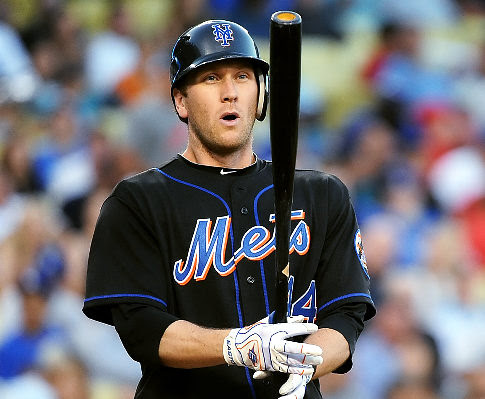The formula for the Sabermetric stat FIP is (13HR + 3(BB+HBP-IBB) – 2K )/ IP That’s then added to a constant to equate it to normal ERA ranges. (xFIP provides some extrapolation on HR rate per fly ball, but my overall concerns remain the same)
The general idea with FIP is to try to determine how well a pitcher pitches without luck and the fielders altering his results. Once the ball leaves the bat it could be a bloop that no one reaches, or a screaming liner that happens to be right at someone. This is not affected by the pitch the pitcher throws, and the only way a pitcher can be sure of a result is to strike out the hitter.
It’s supposed to be irrelevant to the statistic. FIP treats a screaming double off the wall the same as Jeterian soft groundout to short. Except it doesn’t really. The ground out is .1 IP and lowers FIP by raising the denominator in the formula. This is part of the problem with the stat. It does successfully remove bad defense from the equation by not penalizing a pitcher for an infield single that or a liner that finds a hole, but it also credits pitchers with good defense with extra outs.
The stat was created with the assertion that pitchers lose control of what happens after ball hits bat. So the idea is the pitcher is ‘better’ if he can overmatch the hitter and beat him via being a better pitcher than he is a hitter, and striking him out. Another problem is the pitcher does have some control over the batted ball, and no one knows how much or how to measure it. You can see a pitcher one year induce a ton of soft contact, and then all of a sudden induce a lot of strong contact another year. That’s hard to measure. Matt Cain is one example, and Chris Young another, of pitchers that always seem to outperform their FIP.
Actually inducing soft contact, something groundball pitcher seem to do better, is something that _can_ be done. As of yet statisticians haven’t been able to conclusively measure soft contact, and I’m not even sure pitchers can actively decide to do it with any real consistency. It may be that the quality of contact can be reduced by keeping the hitter guessing. Ground balls yield more outs than fly balls, but it’s also true that the times you most want to throw a pitch that gets more ground balls is also the times that the hitter knows you want to throw that pitch.
No stats are perfect, and we shouldn’t hold FIP to a higher standard, or use it in a more absolute manner, than any other stat. I’m certainly not saying that we shouldn’t ever reference FIP, or that we should abandon the quest to expand our knowledge of baseball.
I haven’t done the math, but I could see FIP being a stat useful for picking the reliever you most want to bring into runners on situation. These pitchers should theoretically be the most likely to get an out without a runner scoring due to a lucky bloop, or a home run doing lots of damage. This is especially true of relievers because their smaller sample size of innings pitched leads to much more variance in their ERA.
The difference in ERA and FIP can also be telling, although not conclusively. Looking to see how much a pitcher’s FIP is off from his ERA can be a way to predict if he’s getting lucky, or unlucky. It’s not a tell-all though; it can be used as a warning flag to look further, but it’s not a direct relationship from out-performing FIP to being due for a drop off in performance. Jonathan Niese will be a good study in this this year. His ERA last year, as it’s been most years, was much higher than his FIP. He had a 3.36 FIP and a 4.40 ERA. He’s rewarded for striking out a lot of guys, but the mounting data is starting to suggest that the high amount of hits he gives up aren’t just due to luck and bad fielding.
I’ve started playing around with some of the numbers, but haven’t gotten that far. Tweaking the formula to use batters faced instead of innings pitched doesn’t make that much of a difference. The high numbers of batters bad pitchers face tends to lower their numbers in that case. Pitchers like Oliver Perez who face a zillion guys but then strike out the side to get out of danger would do well in that situation, but even the simplest of analysts knows that’s not a good job.
Next I tried correcting for balls in play. Instead of simply batters faced, I removed the percentages of outs from balls in play that simple luck would turn into outs. Then I adjusted the formula to take away extra outs the defense provided, or add back in outs they should’ve made back towards normal. This looks better, but I’m still looking at the numbers and playing with the formulas to see if I like it. I’m also still just trying to figure out how to smoothly create and maintain a database of baseball stats, so there is a lot of trial and error going on over here.
Sabermetrics have given us a much better understanding of baseball, but it’s only just starting. They got there by questioning the established logic, and it’s a philosophy we shouldn’t abandon just because we’ve taken a big step in understanding.




